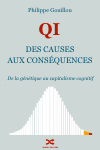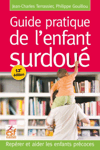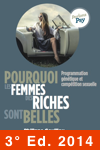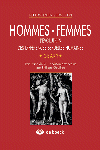Some ideas on parenting gifted preschoolers
©David Farmer
Some ideas on parenting gifted preschoolers
Realising that your preschooler is gifted can catch you unawares, especially if the child is your firstborn.
If you are lucky you may have a partner, relatives or friends who act as resources, or at least sanity-preservers, as you face the ultimate hands-on, independent learning challenge - parenting. If you are more fortunate still, these support people or some other source of information might give you the perspective that enables you to detect when you have a youngster that is developing faster than normal.
Identifying giftedness in young children
Perhaps the most useful first piece of advice is to keep good, dated records of your child's development, not just of sitting and walking, but of the less glamorous stages too, such as grasping an object with finger and thumb, first using a two word sentence, and first turning of the pages of a book etc.
Children clearly progress at different rates in the various areas of development. A child may mature quickly in the area of gross motor skills but may be slower in his or her mastery of the cognitive milestones. Of course individual milestones are not, on their own, a good basis either for diagnosing giftedness or for concern. It is the overall pattern of development in the area, with due allowance for cultural and personality factors, that should form the basis of judgement. On this basis the adjacent tables showing normal developmental milestones, and those significantly advanced, may be useful.
| Development milestones | ||
| Gross motor | ||
| Rolls over | ||
| Sits alone | ||
| Stands alone well | ||
| Walks alone | ||
| Walks up stairs | ||
| Turns pages of book | ||
| Runs well | ||
| Jumps with both feet | ||
| Rides tricycle using pedals | ||
| Throws ball | ||
| Skips with alternate feet | ||
| Fine motor | ||
| Plays with rattle | ||
| Holds object between finger and thumb | ||
| Scribbles spontaneously | ||
| Draws person with two body parts | ||
| Draws recognisable person with body | ||
| Draws person with neck, hands & clothes | ||
| Language development | ||
| Vocalises two different sounds | ||
| Says first word | ||
| Responds to name | ||
| Babbles with intonation | ||
| Vocabulary of 4-6 words | ||
| Names an object | ||
| Vocabulary of 20 words | ||
| Combines several words spontaneously | ||
| Uses simple sentences | ||
| Uses personal pronouns |
It is in the cognitive and social areas of giftedness that some of these milestones are often more difficult to assess. In addition to language development, Milner-Davis (1996) suggests notice be taken of a child's
- advanced knowledge
- advanced thinking or reasoning
- particular creativity
- humour and joke telling
- spontaneity
- demands for independence
- being competitive
- persistence in completing tasks, and
- advanced social maturity (such as in sharing, invitations, reminding others about rules, and role-playing).
A parenting response
It has been said that parents of gifted preschoolers should just do what all parents should do - feed their child's interests and respond to their needs as they change, and stay loose (ie flexible). (The normal follow-on advice is to enjoy this time, for problems undoubtedly start when the child reaches school!)
While there may well be truth in this, Milner-Davis (1996) suggests it is important to realise that the needs of the gifted youngster may not all be ones of simply finding the right materials or enrichment activities, and moreover that interaction with preschools and day-care staff can be demanding.
For instance a child may have a need for independence and leadership at an age where his or her chronological peers may not generally be ready to be led - this can lead to intense frustration unless there are other opportunities for appropriate social interaction. And the frustration and difficulties may well lead to problem behaviours, such as bossiness, which might need to be addressed and modified.
Problems with day-care and preschool arrangements can include those which may seem trivial to the adults involved. The organisationally efficient practice of having a line of little toilets without privacy might offend the sense of dignity in some advanced preschool children. (Or alternately it might appeal to the humour of others.) Some emotionally mature children might find being talked about by adults in their hearing offensive. Alternately children who have passed the need for an afternoon nap might find a timetabled slot for one a real problem.
The same flexibility we need in ourselves as parents we also need to look for in a preschool or care setting. This includes flexible groupings to allow a child to find their appropriate cognitive, physical and social challenges, and flexible use of resources, without certain materials being withheld simply due to age. Arguments for early admission or transfers from one stage to another apply equally in the preschool setting as they do at school.
Almost certainly there will be problems and parents may seek to charge in and set things to right. This might not always be wise. One parent, for whom I have great respect, says it is important for the child to receive the message that the parent can do something about any problem the child faces (King, 1996). But she continues to say that one of the choices the parent may make, after considering the choices, is to do nothing and to leave facing the problem to the child.
Parents and other adults can facilitate language and social development by talking with the child about such issues and problems that he or she might be facing. The child can be encouraged to raise some of different solutions and then to predict the likely consequences. Ideally this process gradually becomes the child's, with the adult gradually withdrawing and leaving the child a strong tool with which to face problems in school and later in life.
Parents can also use real life examples to show how different people can have conflicting opinions and still be good people, and how varying standards of behaviour and language might reasonably apply in different circumstances.
Activities for gifted preschoolers
Now for some immediate practical ideas. Things to do in that rare commodity, "quality time". Or in the queue at the supermarket. Most of the following ideas come from an article "Ideas and activities for parents of preschool gifted children" by Laura Siegelbaum and Susan Rotner, that appeared in Gifted Child Today in Jan/Feb 1983. (It is also reprinted on the Queensland Association for Gifted & Talented Children's world-wide web pages with URL "http://www.peg.apc.org/~maxlink/qagtc/ideas1.htm".)
- Compare and contrast - ask you child what is different and what is the same about things like two dogs, two characters in a book, two people he or she knows, two TV shows, two cereals…
- Different ways of grouping - ask your child to find different ways of grouping things like favourite TV shows, people he or she knows, toys, drinks, hours of the day, feelings, clothes, different geometrical shapes…
- Educated guesses - ask your child to make guesses like what will happen next in this TV show, or in this book, or what do you think that man does for a living, or why do you think that child is angry…
- What ifs - ask your child what would happen if we leave this piece of bread outside on the grass, or if we send a letter to grandma, or if people could fly, or if he or she was angry with all her friends…
- Scrambled animals - ask your child to choose a couple of animals he or she knows and then ask him or her to scramble some of the parts together, then see if he or she would like to draw the result or model it in plasticine or tell a story about it or suggest some things that the new animal could or couldn't do well…
- Taping a story - show your child how to use a portable cassette recorder with microphone, and encourage him or her to either tell a story or sing a song or perhaps to go on a trip around the house describing what he or she can see so that you can guess when you listen later…
- Create your own super hero - ask your child if they want to create a super hero, just like someone else created Superman (or whatever else is popular) in their imagination, then ask your child to close his or her eyes and just imagine this new super hero for a while, before telling you about it, giving it a name, drawing it or making up a story about it etc…
- Picture makers - give your child a good piece of paper with some lines drawn on it that do not make anything in particular, or make something like a wheel that can be used in many ways, and ask your child to use these lines to make a picture of anything he or she likes, and then to describe it to you…
- Creative cooking - ask you child to create some interesting dishes of his or her own, perhaps by starting with one or two suggestions like, Jungle Jelly or Nut Salad…
- Money, money, money - talk to your child about the way notes and coins are used, and if he or she is interested let your child set up his own shop with things from the pantry and with real coins, and extending this to letting your child make one or two purchases from the store and taking the change, or to working out the cost of a meal you are eating, etc…
- Recognising shapes - ask your child what basic shapes are involved in some real life objects like a book or a milk carton or a house, and to learn the names of common two and three dimensional shapes and to recognise them when he or she sees them…
- Step number lines - find a staircase and tie a coloured ribbon on one of the middle steps, telling your child to imagine that standing on this step means that there are no apples (or whatever) and that going up a step means one more apple and so on, then give your child some simple sums by going up and down steps, and while you are blind-folded give him or her some continuing simple sums (such as "take away two apples for the ones you ate for breakfast") that end up with your child say on the step corresponding to his or her age, and ask your child to check…
- Use your own imagination… and good luck!
References
Harrison, C (1995) Giftedness in early childhood. Sydney: KU Children's Services.
King, V (1996) Email message on TAGFAM mailing list.
Milner-Davis, Jessica (1996) The gifted child in the family: Responding to the early childhood years. Talk given at the NSWAGTC 1996 Annual General Meeting, Sydney.
Siegelbaum, L & Rotner, S (1983) Ideas and activities for parents of preschool gifted children. Gifted Child Today Jan/Feb 1983.
For further reading there is an excellent set of references in Harrison (1995) and Milner-Davis, in particular, quoted:
Barnett, LA & Fiscella, J (1985) A child by any other name… a comparison of the playfulness of gifted and non-gifted children. Gifted Child Quarterly 29(2), 61-66.
Kitano, MK (1985) Ethnography of a pre-school for the gifted: what gifted young children actually do. Gifted Child Quarterly 29(2), 67-71.
Moss, E (1990) Social interaction and metacognitive development in gifted preschoolers. Gifted Child Quarterly 34(1), 16-20.



















